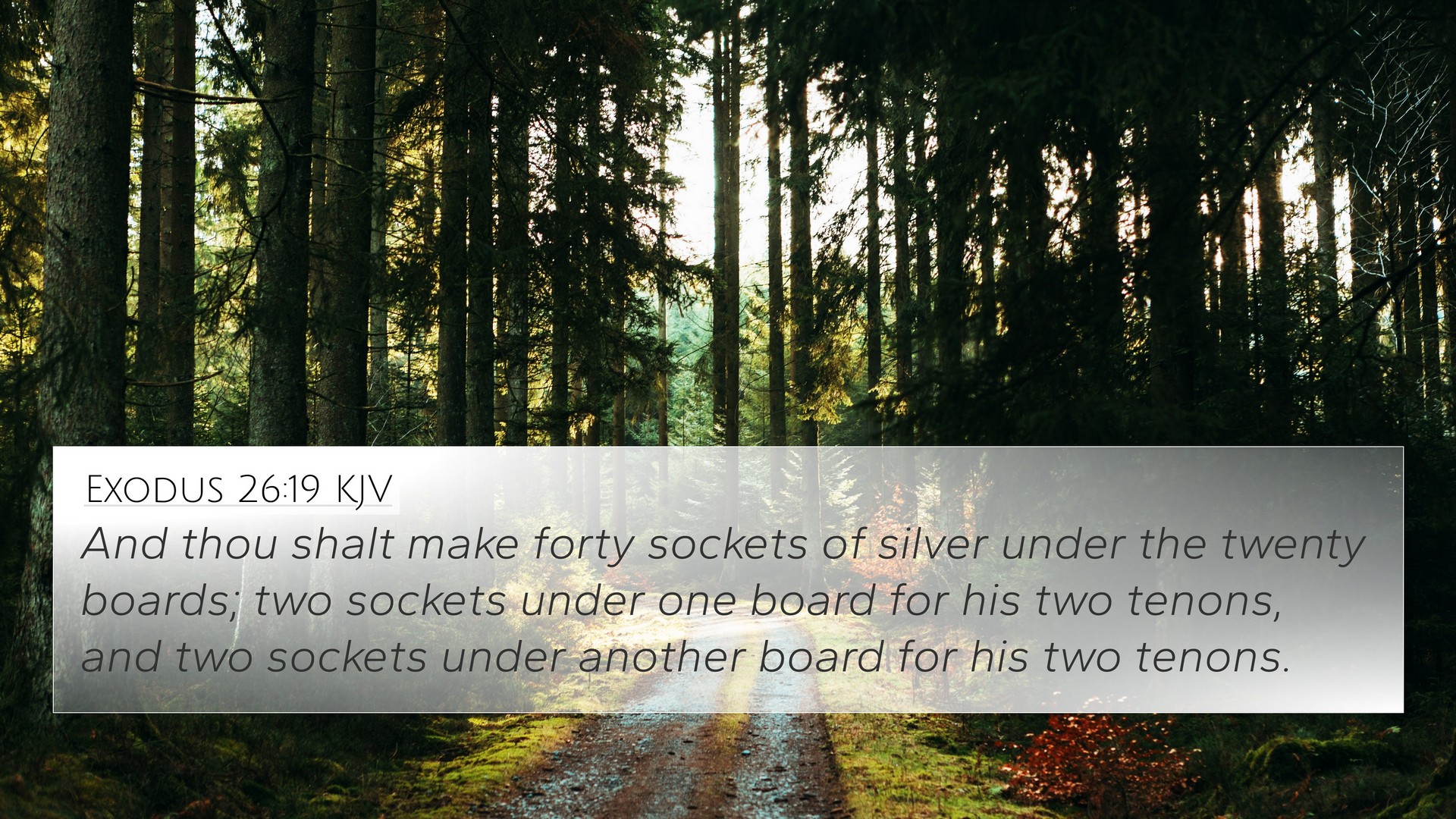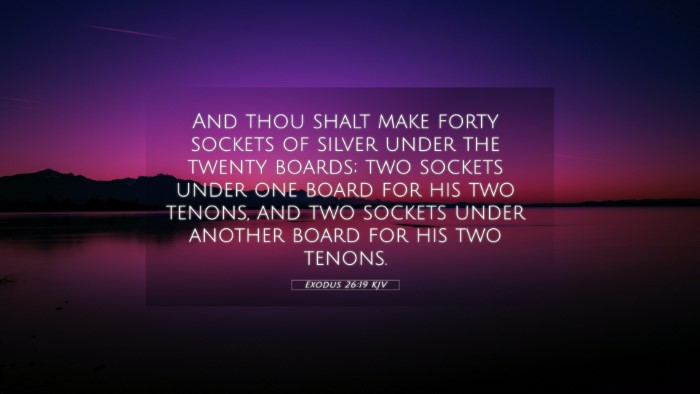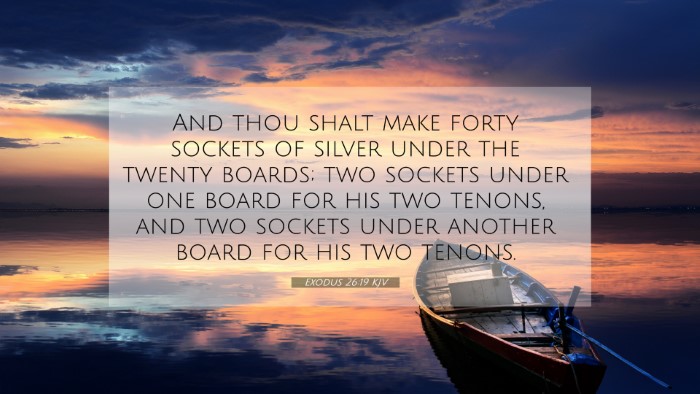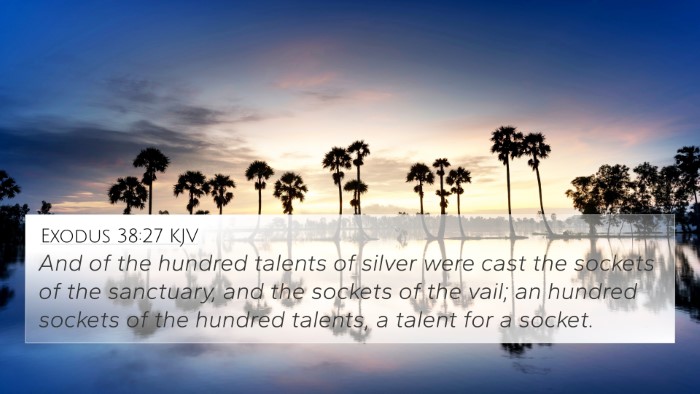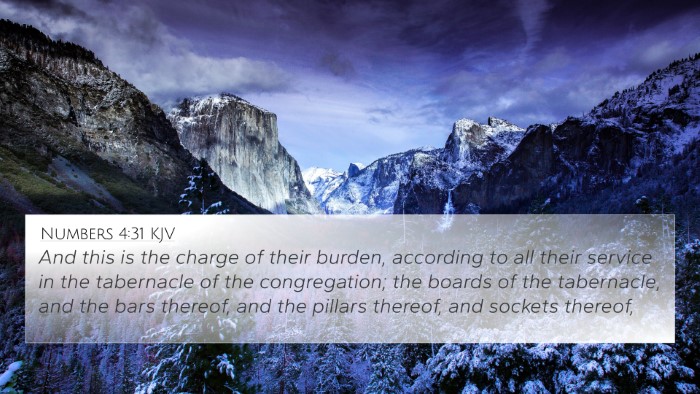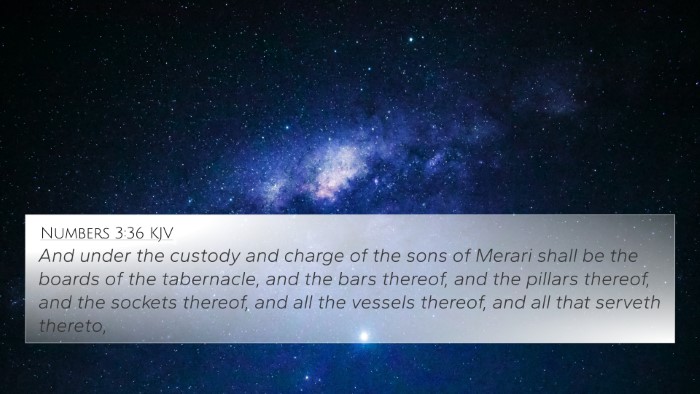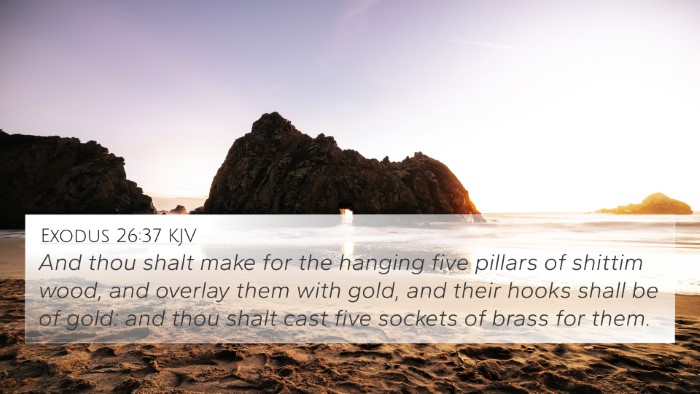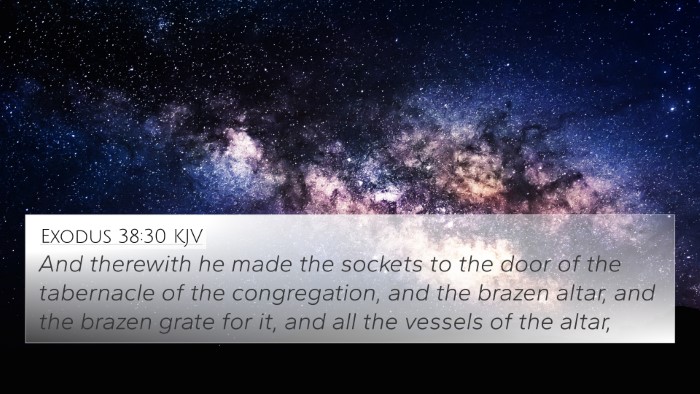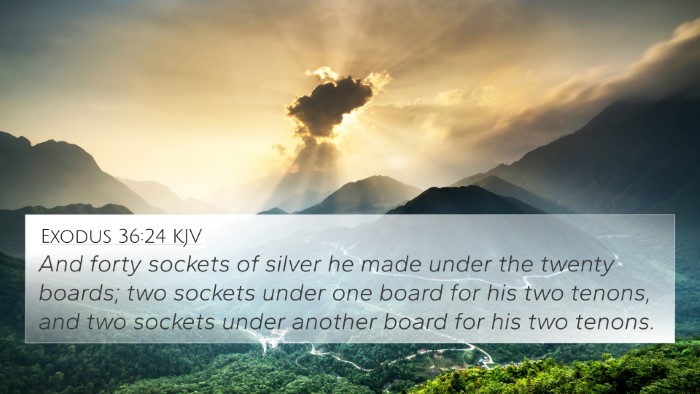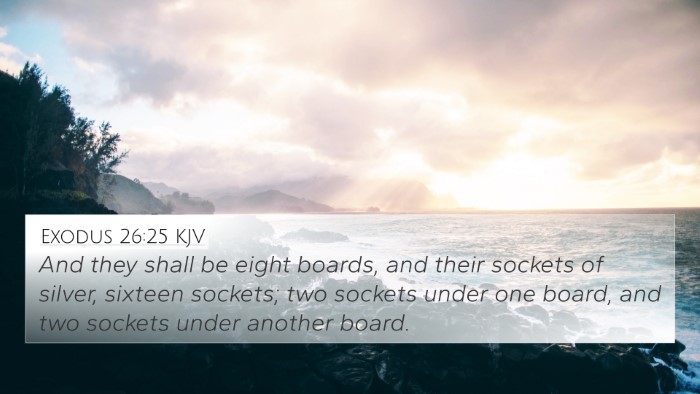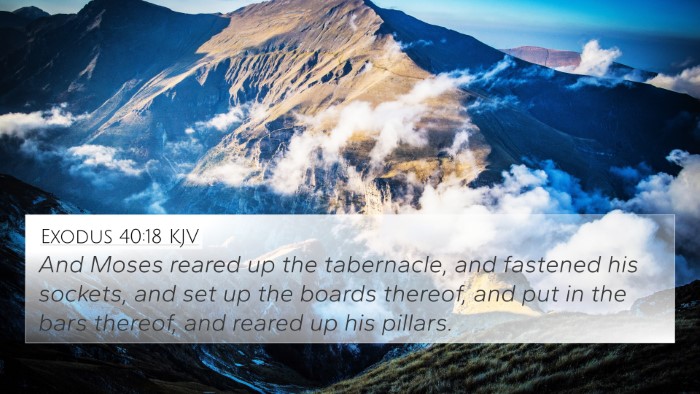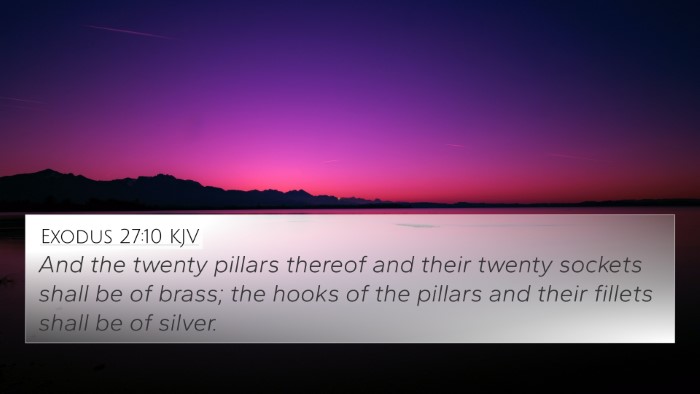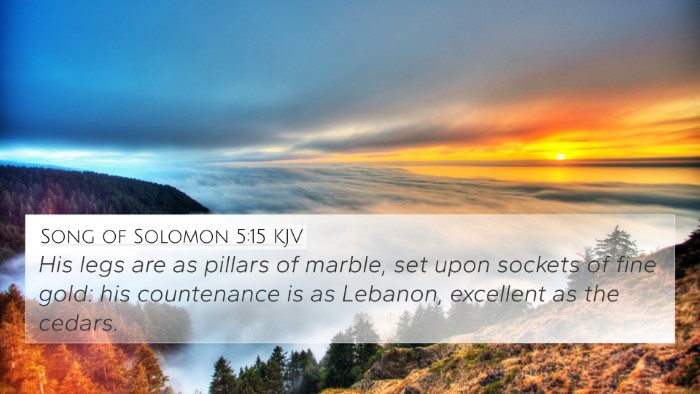Exodus 26:19 - Understanding the Verse
Exodus 26:19 states: "And the boards for the tabernacle he made of shittim wood, standing up." This verse is part of God's instructions to Moses regarding the construction of the Tabernacle, a dwelling place for God among His people. The setting and components introduced here have deep spiritual significance.
Summary of Exodus 26:19
This verse emphasizes the materials used in constructing the Tabernacle, particularly the use of shittim wood, which King James' Version refers to as acacia wood. The choice of wood is significant and suggests stability and strength, symbolizing the enduring presence of God with His people.
Commentary Insights
- Matthew Henry: Henry notes that the boards symbolize the church, which is built upon Christ, represented as the wood of the Tabernacle. The use of shittim wood indicates that the church, though made of earthly materials, exists for heavenly purposes.
- Albert Barnes: Barnes emphasizes the structural importance of the boards in forming the walls of the Tabernacle, standing upright to create a defined dwelling place for God's presence. He indicates that this represents the necessity for establishing order in worship and the community as a whole.
- Adam Clarke: Clarke mentions the significance of each board being a single piece, standing upright in a frame that signified unity in worship and service to God. The dimensions and construction reflect divine order and the beauty of holiness.
Thematic Connections
The construction of the Tabernacle, including its boards, has several thematic connections throughout the Bible:
- 1. God's Dwelling Place: The Tabernacle represents the presence of God among His people (Exodus 25:8).
- 2. Symbol of Christ: The materials and structure foreshadow Christ as the ultimate dwelling of God with humanity (John 1:14).
- 3. The Church as the Body of Christ: The boards symbolize believers coming together as part of Christ's body (1 Corinthians 12:27).
- 4. Spiritual Stability: Just as the boards were set for strength, believers are called to be strong and steadfast in faith (1 Corinthians 15:58).
- 5. Holiness and Obedience: The meticulous plans signify the importance of adhering to God's commandments (Deuteronomy 28:1).
- 6. Unity in Diversity: Each board, while unique, contributed to the overall structure, symbolizing the unity of believers despite diversity (Ephesians 4:4-6).
- 7. God's Provision: Shittim wood was a valuable resource, representing God's provision for His people amidst their journeys (Philippians 4:19).
Bible Cross-References
When studying Exodus 26:19, one can find significant cross-references that provide further insight:
- Hebrews 9:2: The New Testament reflection on the Tabernacle and its components.
- Exodus 25:10: The command concerning the Ark of the Covenant, which relates to the sacredness of the Tabernacle.
- 1 Peter 2:5: The idea of believers as living stones in a spiritual house.
- Revelation 21:3: The culmination of God's dwelling among His people in eternity.
- Galatians 6:10: The call to do good to all, especially to those in the household of faith.
- Romans 12:1: Presenting our bodies as living sacrifices relates to the holiness of the Tabernacle.
- Exodus 40:18: The completion and setting up of the Tabernacle which brings Exodus 26:19 into view.
Final Thoughts
Exodus 26:19 serves as a powerful reminder of God's desire to dwell among His people and the careful preparation that is required for that relationship. The boards, made of shittim wood, not only symbolize strength and stability but also the unity of believers who make up the body of Christ, as seen in various New Testament echoes.
Using Bible Cross-Referencing Tools
Engaging with Bible cross-references enhances understanding and reveals connections that deepen one's spiritual insights. Tools like a Bible concordance or a cross-reference guide can help you discover these thematic connections and insightful parallels between scriptures that uplift and encourage.
